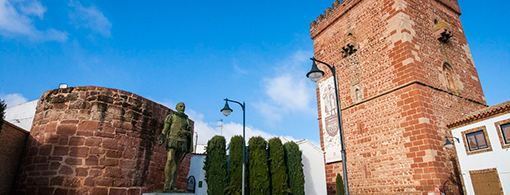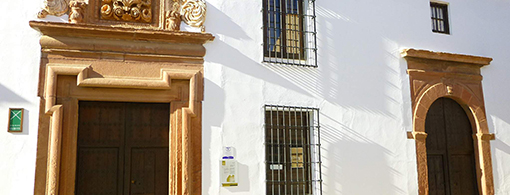Church of Santa María

Church of Santa María
ALCÁZAR DE SAN JUAN
It is the oldest parish in the area. Its origin could date back to the Iberians and Romans. With the Muslims it was a mosque and with the Christian kings of the north it became a Christian temple under the Order of St. John, whose cross can be observed throughout the temple. The Romanesque part of the church was built during this period. However, most of it was rebuilt years later following the precepts of the Renaissance style, as can be seen in its interior and exterior. The Baroque style is visible in the main altar and the chapel of the virgin of 1742.
The most outstanding parts of the façade are made of carved ashlars of red sandstone, such as the corner plinths, the doorways and the areas of highest resistance. Brick completes the rest of the façade, organised in vertical and horizontal rows. The buttresses are visible along the side walls. Its windows are relatively small, lintelled, with vegetal motifs and grilles decorated with the cross of St. John.
Nowadays it has no bell tower. This is because its bells were provisionally placed after its collapse in the Torreón del Gran Prior while another tower would be rebuilt, which never happened and is why they are still on its terrace.
The church has a Latin cross plan with three naves. The church has a Latin cross plan with three naves. Its ceiling is made of plaster vaults, with a barrel vault in the centre.
The altarpiece of the main altar was built in 1595 and dedicated to Mary’s Assumption. It was commissioned to Diego Barroso and his brother Miguel, who painted it.
At the base of the church, below the choir, is the 14th century baptismal font where, according to tradition, Miguel de Cervantes Saavedra was baptised. The Chapel of the Virgen del Rosario was added to the church in 1742 when the artistic canons of the Baroque period were still in force, and on its way of evolution towards Rococo.
The image of the Virgin of the Rosary currently presides over the church. Her devotion dates back to the 16th century when she was called of Naval, because, according to tradition, she appeared in the battle of Lepanto. In 1954 she was officially declared Patron Saint and Perpetual Mayoress of Alcázar de San Juan.
Location
Useful information:
-
- Address: Plaza Santa María, 7 | Alcázar de San Juan
- Opening hours:
- The church usually opens an hour to half an hour before the mass.
Mass schedule:
Weekdays: 7:30 p.m. (in winter), 8:30 p.m. (in summer).
Holidays: 10.00 a.m., 12.00 p.m., 7.30 p.m. (in winter), 8.30 p.m. (in summer).
It is not open on Saturday mornings because there is no worship.- Price: Free
- Contact: Parish Church of Santa Maria (926 540 794)









